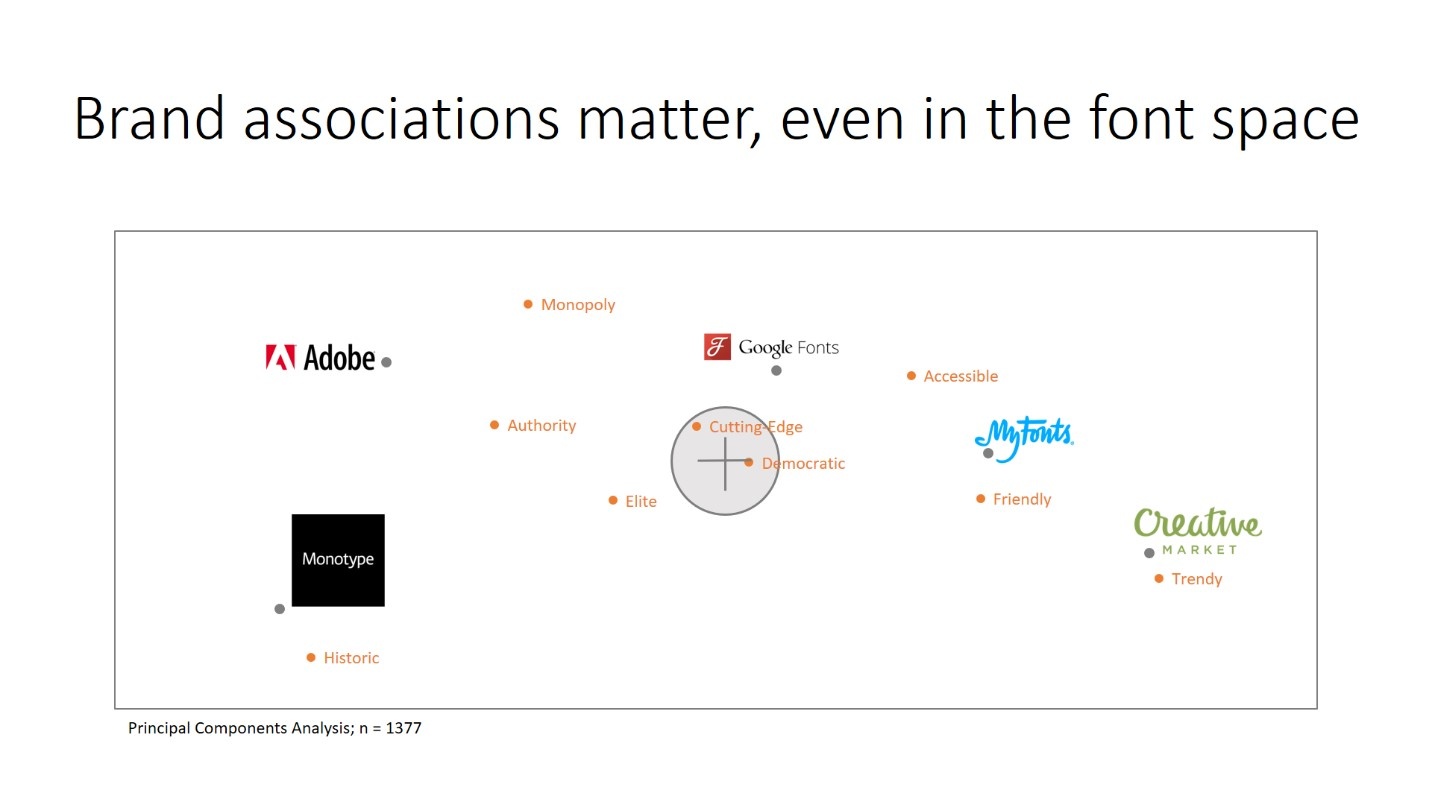Control the chaos and unleash your team's potential with Extensis Connect / Learn More
Control the chaos and unleash your team's potential with Extensis Connect / Learn More

It goes without saying that fonts are as critical as colors, designs or markers in conveying the value and promise of a company’s brand. Research has shown that type font characteristics have been shown to influence consumers’ perceptions of a brand’s personality through the use of naturalness, harmony, and flourish.
But how do those fonts, as products, confer meaning upon the companies that publish, sell, and distribute them?
A recent survey was conducted on the Font Purchasing Habits of creatives around the world, which included 1,377 of you, our Extensis customers. Among many insights provided via the results of this survey, one set measured the brand associations of a small set of font publishers:
Specifically, the brand associations measured in this query included:
Analyzing these data to understand the brand perceptions Extensis customers have regard to these brands, a type of mapping analysis was used to visualize the relationships of these brands to their associated attributes, and to each other. In fact, branding research is a great application for principal components analysis and the kind of maps it produces. When assessing alignment of the brand perceptions to the brand, measuring both emotional and reputational attributes in a competitive context as was done here, a brand map visually portrays how a brand is currently perceived through its attribute associations vis-à-vis where the client wants the brand.

To interpret this map, some guidelines include:
So when considering how to successfully merge brands, as Monotype did with MyFonts when it acquired Bitstream in 2011, a couple strategies emerge:
Success is in the execution, and thankfully Monotype executed the former strategy rather than the latter in 2011, because brands matter. Whether they are represented by the fonts used for the name, the colors or the markings, brands and their representation connote the promise made to customers and the company’s ability to execute on that promise.
 Darrin Helsel – Sr. Customer Insights Manager
Darrin Helsel – Sr. Customer Insights Manager
Darrin Helsel has been working in market research, in service to the technology industry, for over 15 years. As Sr. Customer Insights Manager for Extensis, his mission is to leverage his expertise to collect and channel customer insights in support of customers getting more from their digital assets, fonts and images. When he's not asking questions or analyzing data, he and his family are exploring all that the great Pacific Northwest has to offer, either on bicycle or motorcycle. And during the wet months, as a self-reported comics geek, you may find him home reading or in the movie theater consuming the latest installment of the Marvel Cinematic Universe.